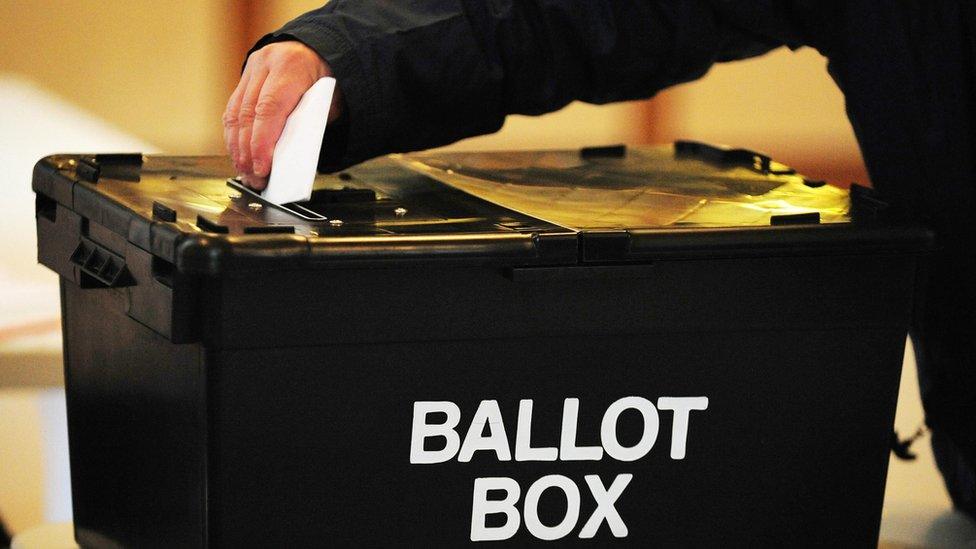Single transferable vote (STV): What is Northern Ireland's voting system?
- Published

When voters go to the polls in Northern Ireland on 18 May to elect new councillors across 11 councils they will cast their ballots using the single transferable vote (STV) method.
What is STV?
STV is a voting system designed to allow voters more choice than just one candidate and to avoid votes being "wasted", which some people argue is common in other systems such as first past the post.
It is a proportional system, which means that parties will win roughly the same proportion of seats in the assembly as the votes they receive.
How do people vote?
Voters rank candidates in order of preference and are able to vote for as many or as few candidates as they like.
They write a 1 beside their favourite candidate, a 2 beside their second favourite and so on.
What happens when counting begins?
A quota is calculated for each constituency using a mathematical formula, based on the number of seats and the number of votes cast.
The first preference votes are all counted and any candidates who meet the quota are elected.
If a candidate has more votes than they need to meet the quota then their extra votes are transferred to other candidates - so the candidate marked "2" on those ballot papers gets those votes instead.
Meanwhile, the candidate with the fewest votes is knocked out and their second preferences are transferred to other candidates.
What happens next?
The same process continues round by round with the lowest candidate being knocked out and their votes being transferred to candidates who are still in the race.
Eventually, either five candidates meet the quota or there are only five candidates left and are deemed elected.
In the very unlikely event that nobody meets the quota, the five candidates remaining after everybody else has been knocked out are elected.
Why is it used?
The system has been in place for Northern Ireland Assembly elections since the assembly was set up in 1998.
It was chosen to allow a wide range of voices to be heard in the assembly, not just representatives from the biggest parties.
It also means that minorities in certain constituencies still have a chance at being represented in the assembly. For example, in a constituency that has a mostly nationalist electorate, unionist voters might still be able to get a unionist candidate elected.
Another perceived benefit of STV is that it encourages parties to appeal to a wider range of voters. For example, a party may offer policies that appeal to people outside its traditional voting base in the hope that they will give them a "preference" further down the ballot paper.
How can I follow the counting on the BBC?
The results page for each constituency will show a summary of the total number of first preference votes won by each candidate and each party.
At the top of each page the total number of seats won by each party will be shown.
The page for each constituency will have a stage-by-stage breakdown of results, which you can click through to see which candidates have been elected or eliminated at each stage.
How does the stage-by-stage breakdown work?
At the top of the stage-by-stage section you will see the quota.
Any candidates who meet the quota at the first stage will be marked as "elected".
When you click through to the next stage you will see how the extra votes from candidates who have been elected above the quota or the votes from candidates who have been eliminated are transferred to their second preferences.
This carries on through every stage until all five seats in a constituency are filled.
You may see that some candidates have fractions of votes next to their name, for example Joe Bloggs could win 20,500.1 votes.
This happens because of the mathematical formula used to calculate how votes are transferred.


Related topics
- Published17 May 2023
